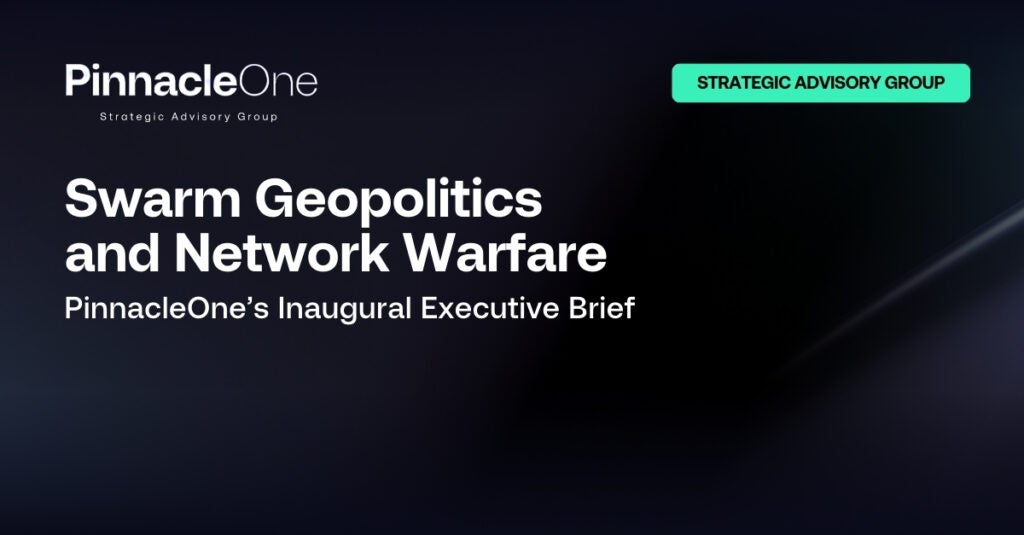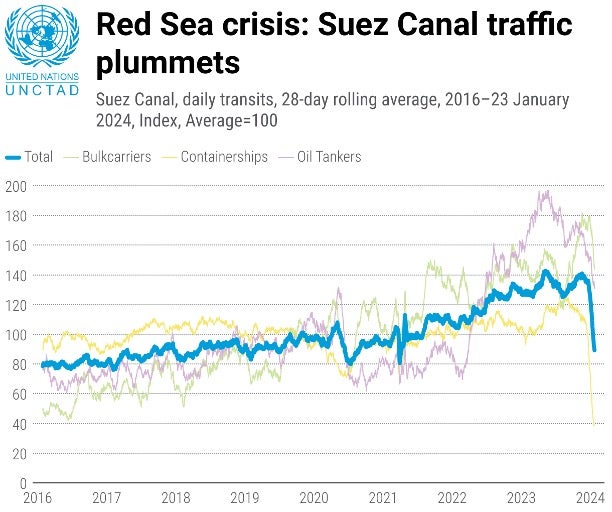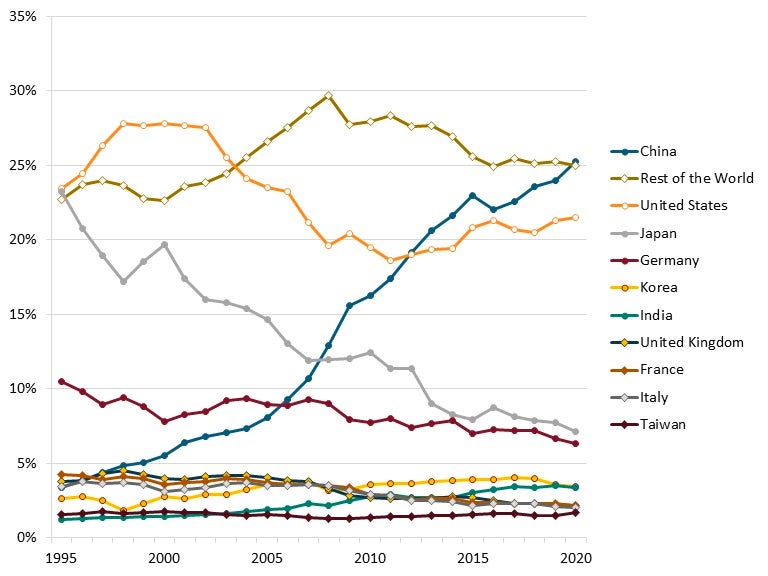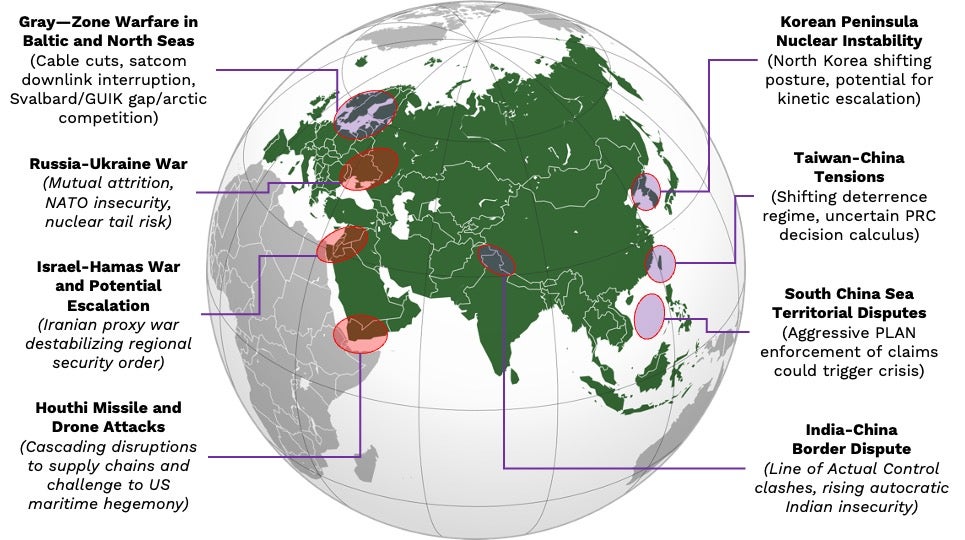Welcome to the re-launched PinnacleOne Executive Brief. Intended for corporate executives and senior leadership in risk, strategy, and security roles, the P1 ExecBrief will provide actionable insights on critical developments spanning geopolitics, cybersecurity, strategic technology, and related policy dynamics.
For our inaugural post, we offer our strategic perspective on the current geopolitical situation, framing global conflicts through the lens of Swarm Geopolitics and Network Warfare.
The focus of the ExecBrief is strategic intelligence for decision-makers–we aim to frame the business significance of acute crisis events and chart the impact of emerging strategic trends. We will attempt to cut through the noise and discard what does not matter, or what is overblown. But when we say pay attention or alert you to a critical development, we mean it, and will have specific recommendations to execute.
Please subscribe to read future issues, and forward this newsletter to your colleagues to get them to sign up as well.
Feel free to contact us directly with any comments or questions: [email protected]

Insight Focus | Swarm Geopolitics and Network Warfare
Technology and globalization has changed the character of strategic competition and asymmetric warfare. A small quasi-state group, the Houthis, have used cheap drones and missiles (supplied by Iran, using Chinese components) to institute a de facto blockade of a major maritime choke point, disrupting shipping and global supply chains (see chart below). Amid the churn of violence and instability that has and will continue to plague the Middle East, the failure of western powers to restore the free flow of commerce marks a strategic inflection point. Recent lethal attacks on US military forces threaten further escalation.

Global power, in the modern era, is equivalent to network power, and network power has two key dimensions: surveillance and chokepoint power. Within digital networks, the west remains in a strong position: signals intelligence/cyber capabilities, financial monitoring and sanctions tools, and dominance in the global internet/software market provide a critical strategic advantage to liberal democracies.
However, within physical networks, the west is increasingly challenged by revanchist authoritarians, which have critical influence over global commodity markets (OPEC Plus) and global value chains (China) that provide asymmetric leverage against highly indebted and inflation-sensitive western polities.
The watchword at the IMF is now “geoeconomic fragmentation”, even as China dominates the strategically important industries in ITIF’s Hamilton Index, producing more than any other nation in absolute terms and more than all but a few others in relative terms (see below).

Further, these authoritarians have worked to turn our digital dependence against us, via broadscale cyber-enabled economic espionage and disinformation operations that undermine our technological advantage and democratic systems. At the same time, the diminished industrial capacity of the west has severely constrained our ability to produce and deploy the shells, missiles, and ships necessary to deter our adversaries.
The result is a widening band of conflict and instability spanning Eastern Europe, the Middle East, the Taiwan Strait, and the Korean Peninsula. This band marks the line between Autocratic Eurasia and Liberal Oceania in an escalating contest for critical resources, regional security, and global power.

This isn’t a world war in the traditional sense, but it is a global conflict. It is being fought in, over, and through global networks, and has the character more of a swarm attacking key nodes than standing armies marshaling for open battle. Most powers now recognize that full-scale war is too expensive to fight, and almost impossible to win.
This doesn’t mean peace, however. It means conflict is pushed to the boundaries of global sovereignty: in space, undersea, the arctic, cyberspace, and weak/failed states. It means policy domains across the board are increasingly securitized and weaponized, including cross-border data regulation, critical technology supply chains, global cloud, AI regulation, social media, immigration/refugee flows, trade and climate policies, and transnational crime.
The interconnectedness of these issues means that local tensions spillover and quickly become global risks. Such a non-linear world demands an adaptive response. The perch of the board room or the C-suite gives a good vantage, but crisis fatigue and the impossible complexity of these emerging risks threaten to overwhelm decision capacity and strategic planning.
Every decision, from IT/cybersecurity programs, supply chain investments and partners, and M&A deals to insider risk, AI integration, and regulatory compliance will take on larger dimensions, and become increasingly coupled. The job of an executive leader isn’t to master this complexity or eliminate risk, but to understand and navigate key dynamics with more flexibility than competitors.
Strategic intelligence provides enterprise adaptability, and enterprise adaptability is competitive advantage. Watch this space as we dig deeper into these issues and their impact on global enterprise.
Help your colleagues stay informed and secure. Share this post with them and help drive the conversation.
Nota bene: General Paul Nakasone will pass the torch of command of Cybercom and NSA Director to Lt. Gen. Timothy Haugh today (02FEB24). A key legacy of General Nakasone’s long and distinguished tenure was the standup of the cyber mission force, which reached full operational capability in 2018. Given the rapidly changing threat environment and role of the private sector, one of Nakasone’s last acts was charging a cross-functional team to re-think authorities, training, personnel, and acquisitions. It will fall to Lt. Gen. Haugh to carry that important effort forward.


